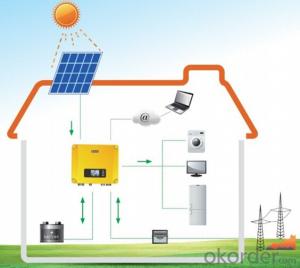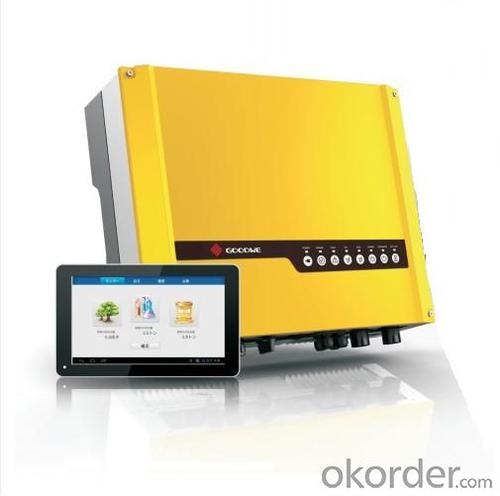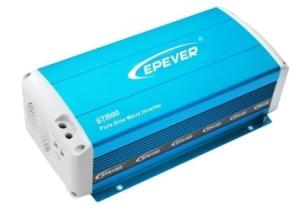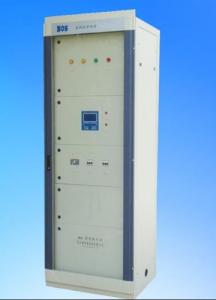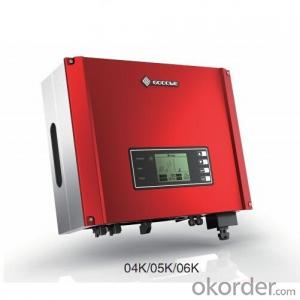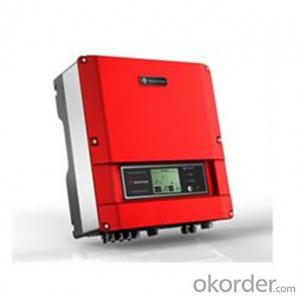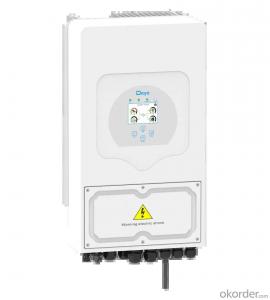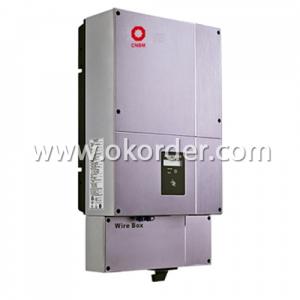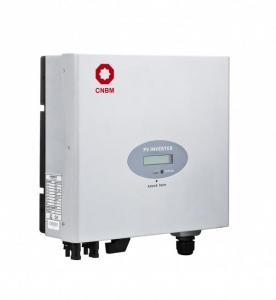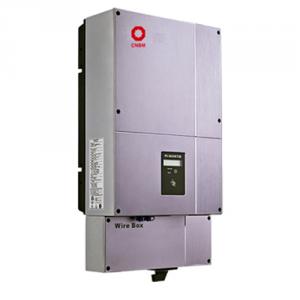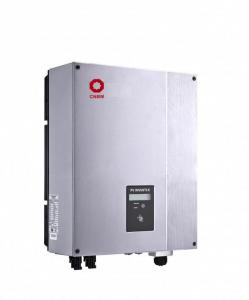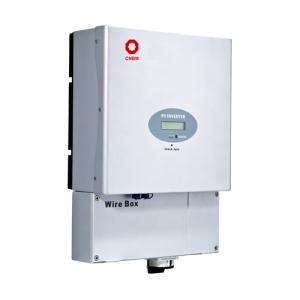MPP Solar Inverter 48V Hybrid Solar Inverter GW3648D-ES
OKorder Service Pledge
OKorder Financial Service
You Might Also Like
GW3648D-ES series bidirectional energy-storage inverter is applicable for both on-grid and off-grid PV systems and can control the flow of energy hybrid with its working situation able to be switched automatically or manually. During the day time, the PV plant generates electricity which can be provided to the loads, fed into the grids or charged the battery. The power stored can be released when the loads require it during the night. Additionally, power grid can also charge the storage devices via the inverter..
Datasheet
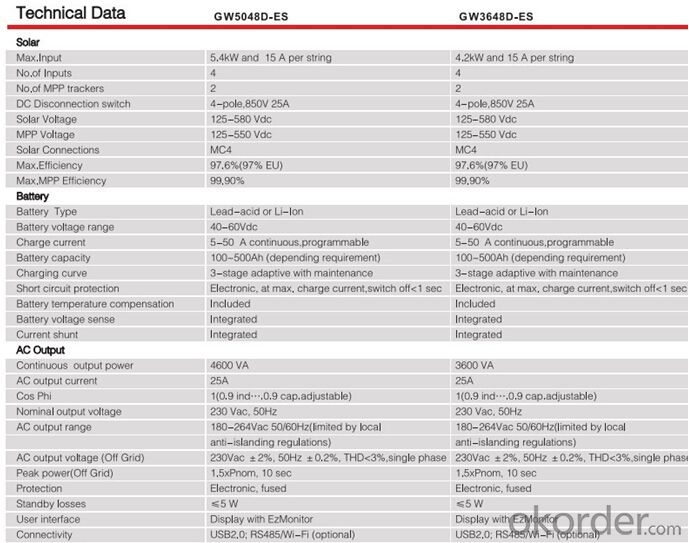
- Q: Can a solar inverter be connected to a battery storage system?
- Yes, a solar inverter can be connected to a battery storage system. In fact, this is a common setup in many residential and commercial solar installations. The solar inverter is responsible for converting the direct current (DC) generated by the solar panels into alternating current (AC) that can be used to power electrical appliances. By connecting a battery storage system to the solar inverter, excess energy generated by the solar panels can be stored in the batteries for later use, such as during periods of low sunlight or during power outages. This allows for greater energy independence and the ability to maximize the utilization of solar energy.
- Q: How does the efficiency of a solar inverter affect the overall system performance?
- The efficiency of a solar inverter plays a crucial role in determining the overall performance of a solar system. A higher efficiency inverter converts a greater percentage of the energy generated by the solar panels into usable electricity. This means that less energy is lost as heat, resulting in more electricity being available for consumption. A more efficient inverter translates into increased energy production, reduced reliance on grid power, and ultimately, higher cost savings. Additionally, a highly efficient inverter enhances the stability and reliability of the system, ensuring optimal performance and longevity.
- Q: Can a solar inverter be easily integrated into an existing electrical system?
- Yes, a solar inverter can be easily integrated into an existing electrical system. It can be connected to the main electrical panel to convert the DC power generated by solar panels into AC power that can be used to power appliances and devices in the building. However, it is important to consult with a professional electrician to ensure proper installation and compatibility with the existing system.
- Q: Can a solar inverter be used in areas with high dust and dirt accumulation?
- Yes, a solar inverter can be used in areas with high dust and dirt accumulation. However, it is important to regularly clean and maintain the inverter to prevent any performance issues caused by the accumulation of dust and dirt.
- Q: What is the efficiency rating of a solar inverter?
- The efficiency rating of a solar inverter refers to the percentage of solar energy that is converted into usable electricity. It indicates how effectively the inverter can convert the direct current (DC) power generated by solar panels into alternating current (AC) power for use in homes or businesses. Higher efficiency ratings mean less energy loss during the conversion process, resulting in more electricity being available for consumption.
- Q: How does a solar inverter protect against short circuits?
- A solar inverter protects against short circuits by incorporating protective devices such as fuses or circuit breakers in its design. These protective devices are designed to detect high current flow caused by a short circuit and quickly interrupt the circuit, preventing any damage or overheating that could occur. Additionally, advanced solar inverters may also include built-in monitoring systems that constantly monitor the electrical parameters and shut down the inverter in case of a short circuit to ensure safety and prevent further damage.
- Q: How does a microinverter differ from a string inverter?
- A microinverter differs from a string inverter in that it is a small, individual inverter that is connected to each solar panel in a system, whereas a string inverter is a larger inverter that is connected to multiple panels in a series (string). This means that each panel with a microinverter can operate independently, optimizing the power output of each panel, while a string inverter operates based on the performance of the entire string of panels. Microinverters also allow for easier monitoring and maintenance as the performance of each panel can be individually tracked, whereas with a string inverter, any issues affecting one panel can impact the output of the entire string.
- Q: What is the power factor correction capability of a solar inverter?
- The power factor correction capability of a solar inverter refers to its ability to correct any power factor issues in the electrical system it is connected to. A solar inverter typically aims to achieve a power factor as close to 1 as possible, which indicates a balanced and efficient use of electrical power. By actively monitoring and adjusting the power factor, a solar inverter ensures that the energy generated from the solar panels is effectively utilized and does not cause any unnecessary strain on the electrical grid.
- Q: What are the common fault indications in a solar inverter?
- Common fault indications in a solar inverter can include error messages on the display panel, blinking lights, sudden shutdowns or restarts, abnormal noise, overheating, and fluctuations in power output.
- Q: Can a solar inverter be used with a portable solar panel system?
- Yes, a solar inverter can be used with a portable solar panel system. A solar inverter is responsible for converting the direct current (DC) produced by the solar panels into usable alternating current (AC) electricity. Whether it is a portable or stationary solar panel system, a solar inverter is necessary to convert the DC power into AC power that can be used to power various devices and appliances.
Send your message to us
MPP Solar Inverter 48V Hybrid Solar Inverter GW3648D-ES
OKorder Service Pledge
OKorder Financial Service
Similar products
Hot products
Hot Searches
Related keywords

